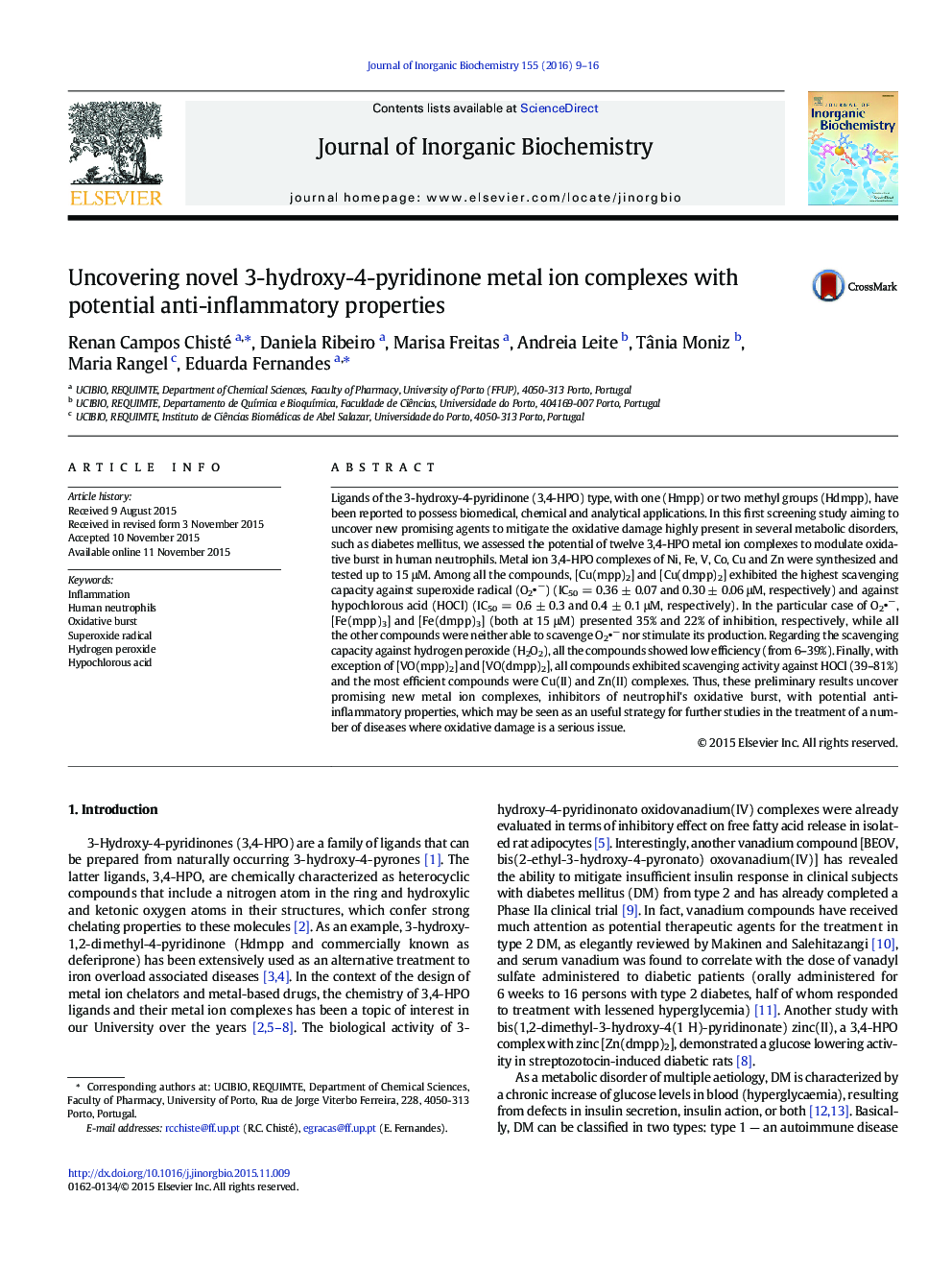| کد مقاله | کد نشریه | سال انتشار | مقاله انگلیسی | نسخه تمام متن |
|---|---|---|---|---|
| 1316970 | 1499432 | 2016 | 8 صفحه PDF | دانلود رایگان |
• 3-Hydroxy-4-pyridinone metal complexes of Ni, Fe, V, Co, Cu and Zn were synthesized.
• Oxidative burst modulation in human neutrophils was assessed for all the compounds.
• Cu(II) metal ion complexes were highly efficient scavengers of O2− and HOCl.
• Cu(II) and Zn(II) complexes were the most efficient scavengers against HOCl.
Ligands of the 3-hydroxy-4-pyridinone (3,4-HPO) type, with one (Hmpp) or two methyl groups (Hdmpp), have been reported to possess biomedical, chemical and analytical applications. In this first screening study aiming to uncover new promising agents to mitigate the oxidative damage highly present in several metabolic disorders, such as diabetes mellitus, we assessed the potential of twelve 3,4-HPO metal ion complexes to modulate oxidative burst in human neutrophils. Metal ion 3,4-HPO complexes of Ni, Fe, V, Co, Cu and Zn were synthesized and tested up to 15 μM. Among all the compounds, [Cu(mpp)2] and [Cu(dmpp)2] exhibited the highest scavenging capacity against superoxide radical (O2−) (IC50 = 0.36 ± 0.07 and 0.30 ± 0.06 μM, respectively) and against hypochlorous acid (HOCl) (IC50 = 0.6 ± 0.3 and 0.4 ± 0.1 μM, respectively). In the particular case of O2−, [Fe(mpp)3] and [Fe(dmpp)3] (both at 15 μM) presented 35% and 22% of inhibition, respectively, while all the other compounds were neither able to scavenge O2− nor stimulate its production. Regarding the scavenging capacity against hydrogen peroxide (H2O2), all the compounds showed low efficiency (from 6–39%). Finally, with exception of [VO(mpp)2] and [VO(dmpp)2], all compounds exhibited scavenging activity against HOCl (39–81%) and the most efficient compounds were Cu(II) and Zn(II) complexes. Thus, these preliminary results uncover promising new metal ion complexes, inhibitors of neutrophil's oxidative burst, with potential anti-inflammatory properties, which may be seen as an useful strategy for further studies in the treatment of a number of diseases where oxidative damage is a serious issue.
Novel synthetic 3-hydroxy-4-pyridinone metal ion complexes of Ni, Fe, V, Co, Cu and Zn were efficient inhibitors of human neutrophil's oxidative burst and their anti-inflammatory potential may constitute a new strategy for the treatment of the pathogenesis and/or complications of several human inflammatory diseases.Figure optionsDownload as PowerPoint slide
Journal: Journal of Inorganic Biochemistry - Volume 155, February 2016, Pages 9–16
